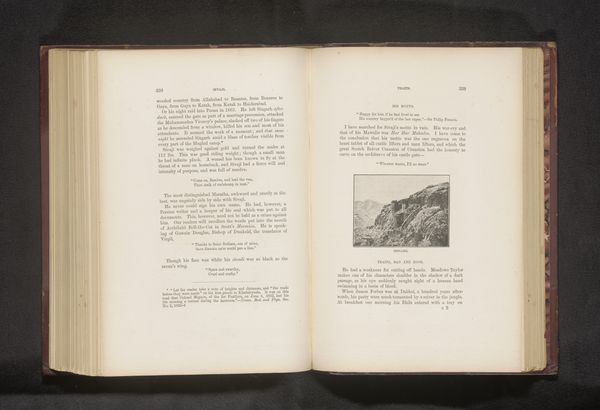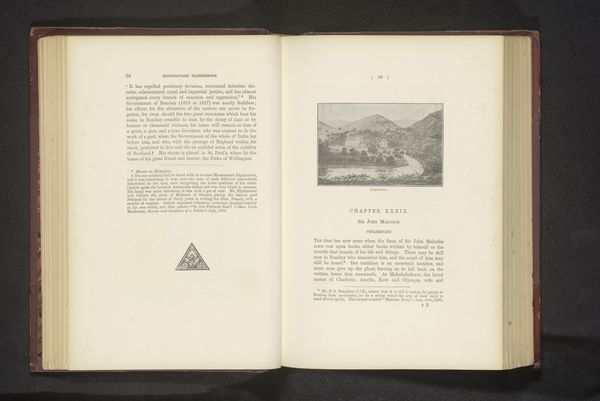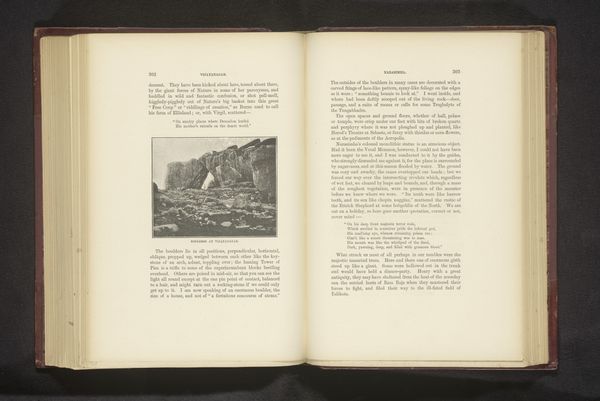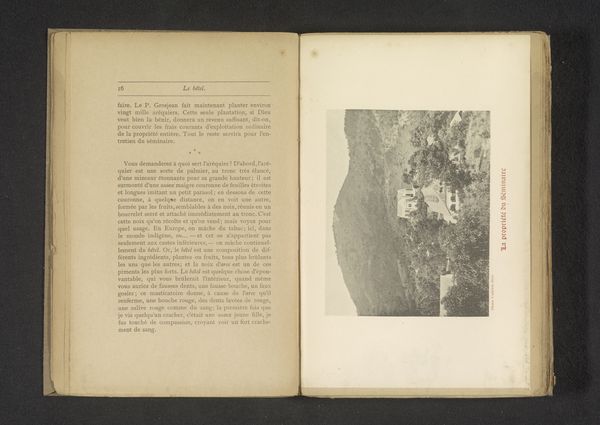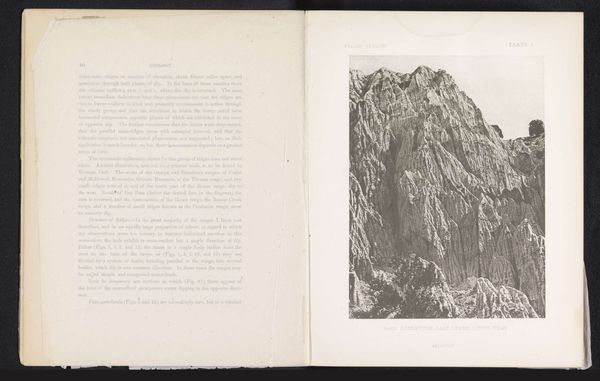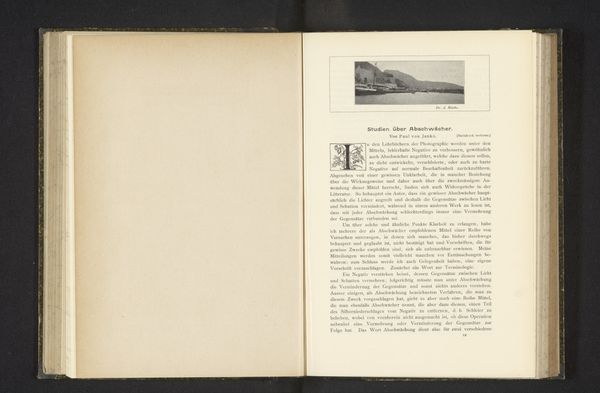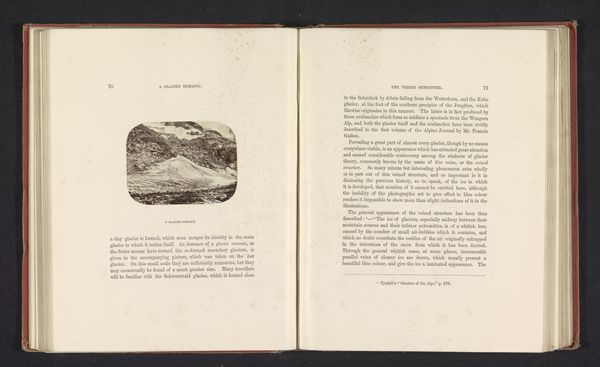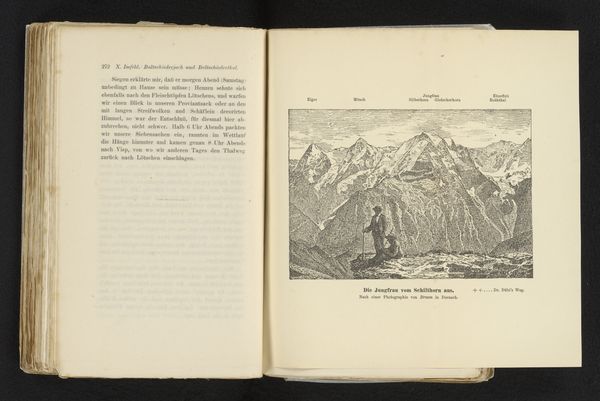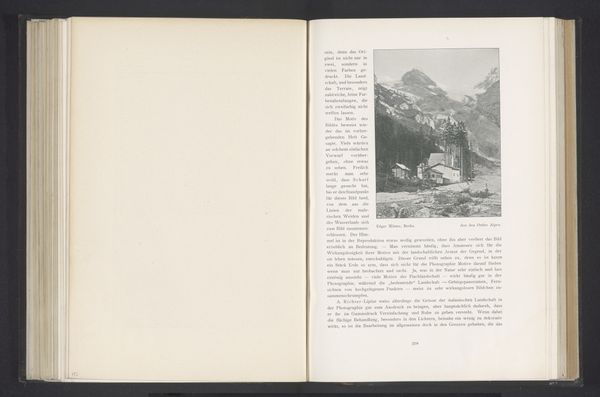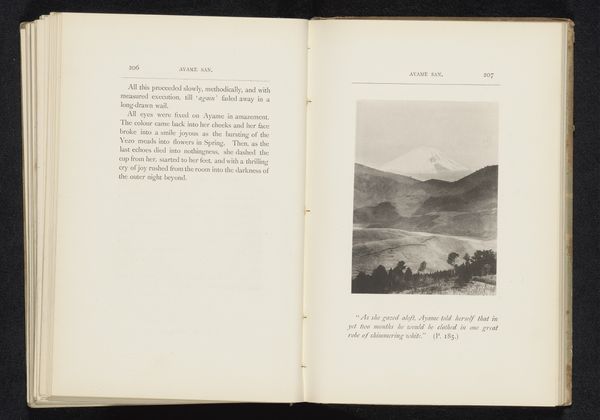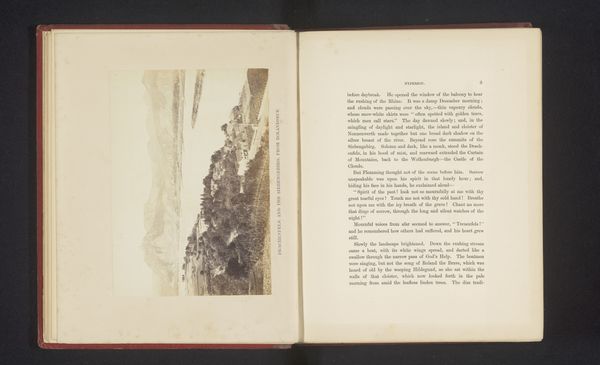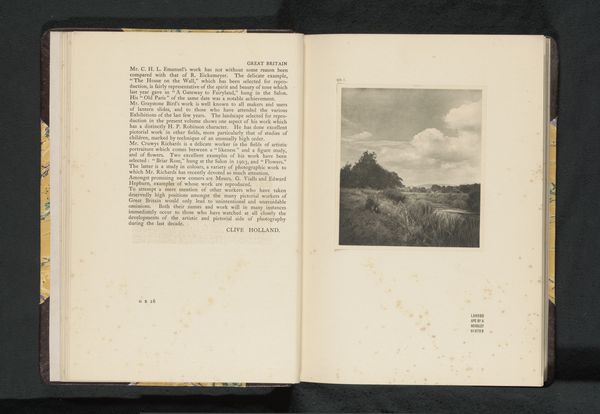
print, engraving
# print
#
landscape
#
mountain
#
orientalism
#
academic-art
#
engraving
Dimensions: height 66 mm, width 95 mm
Copyright: Rijks Museum: Open Domain
Curator: Here we have an engraving entitled "Mount Girnar in Kathjawar," which comes to us from before 1893. What's your initial impression? Editor: It evokes a sense of sublime isolation. The stark monochrome palette and towering mountain range dwarf the small figures, making me feel both awed and a little vulnerable. Curator: Absolutely. The anonymous artist presents Mount Girnar in a way that leans into the Orientalist style, placing an emphasis on an exotic landscape. As a visual symbol, mountains have been revered in Indic traditions, associated with deities and representing steadfastness, spiritual ascent, and divine presence. Editor: And these visual tropes of the exotic land and its steadfast natural features served colonial interests, no? The composition places the "untamed" landscape as something to be conquered, indirectly legitimizing British presence and rule in India at the time. It simplifies the complexities of the Kathiawar region into something palatable for a Western audience. Curator: That's a critical lens through which to view it, for sure. But consider, too, how Mount Girnar is and remains a significant pilgrimage site for Hindus and Jains. This enduring spiritual significance may be encoded here as well. Perhaps this imagery provides both the conqueror’s gaze and a coded indication of resistance and local customs surviving colonization. Editor: That’s an intriguing idea. By presenting a traditionally significant and “untamable” natural landmark, it implicitly acknowledges the resilience of indigenous spiritual and cultural practices even under colonial pressures. It’s a nuanced argument about cultural memory. Curator: And the print medium itself would allow for widespread dissemination, solidifying a Western perspective while subtly preserving an echo of sacred symbolism. The layers of interpretation feel complex and deeply resonant. Editor: Ultimately, this print exemplifies how seemingly innocuous landscape art can operate within much larger social and political narratives. The play between overt visual tropes and more deeply embedded symbolic meanings creates a richer dialogue between then and now.
Comments
No comments
Be the first to comment and join the conversation on the ultimate creative platform.
